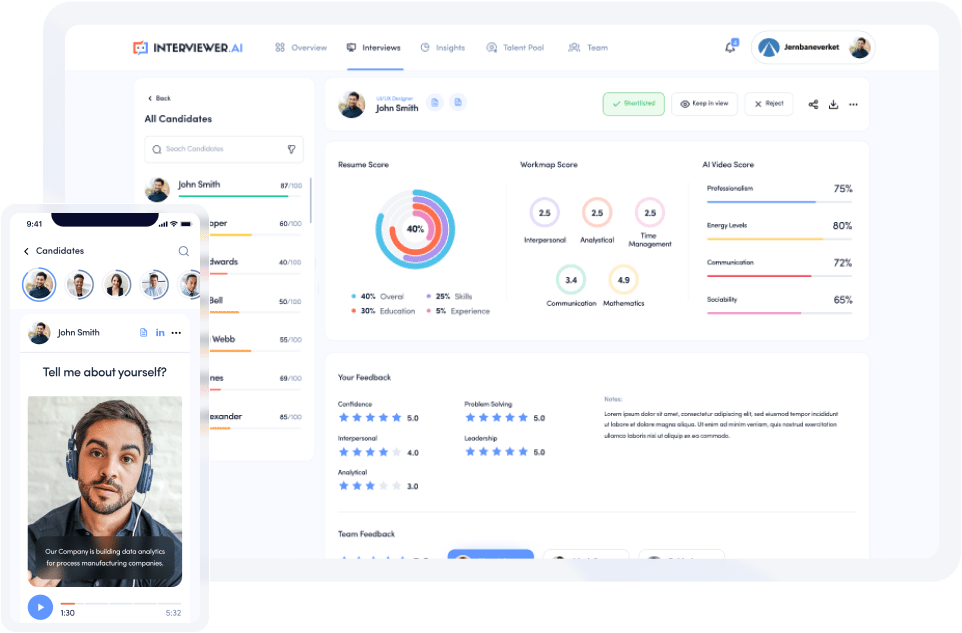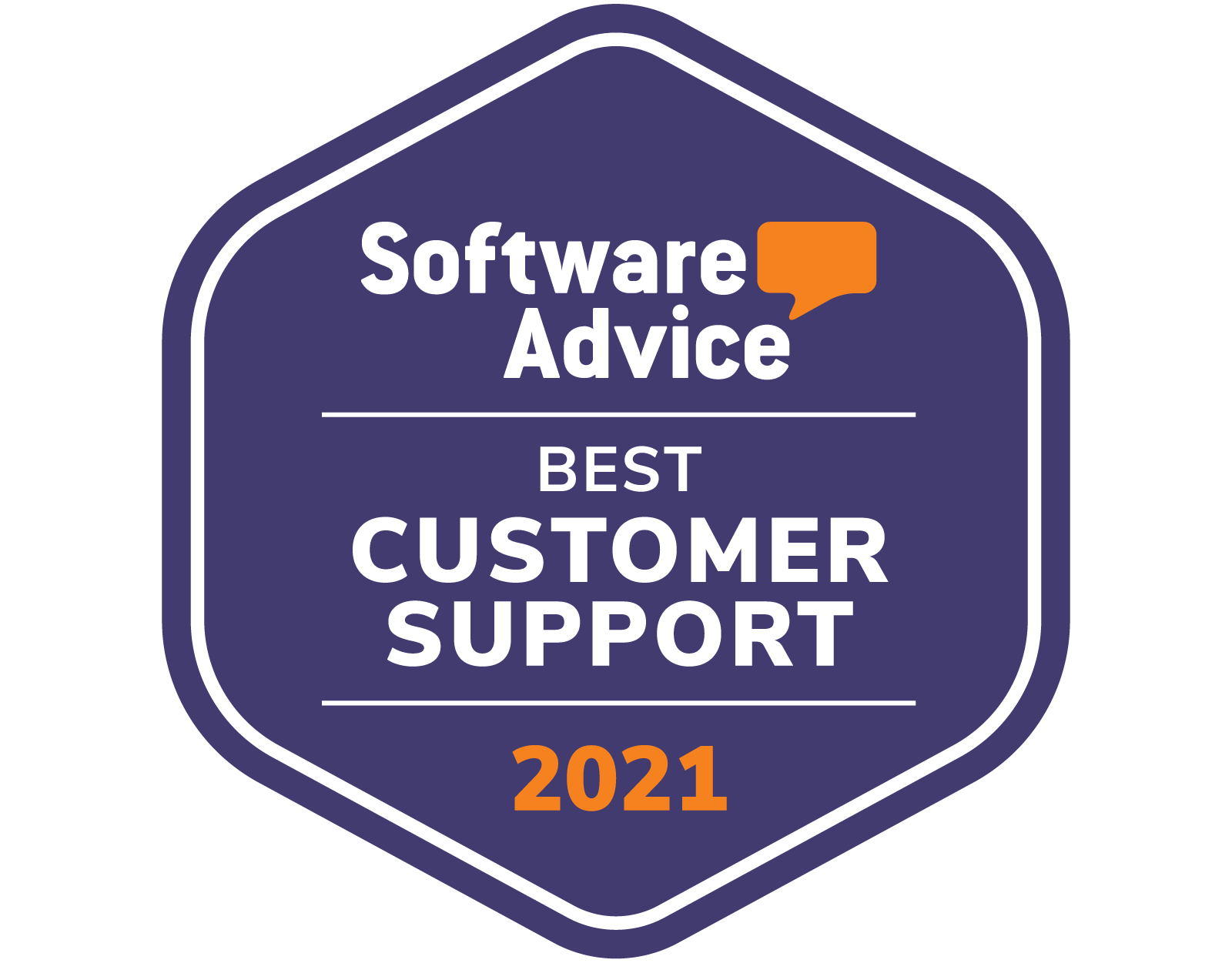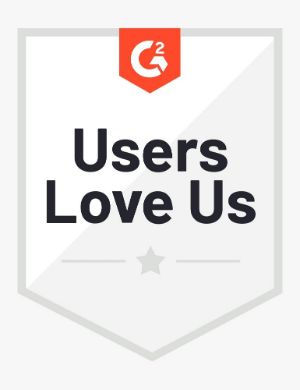This is Part 1 to the series on improving the hiring process.
Companies in different industries have different recruiting seasons. Some, such as consulting, hire year-round while opportunities are seasonal. So what’s the common factor? All companies have a hiring process that is meant to help them find quality candidates.
The hiring process for every company is mostly similar: you have the applications, the interviews, and more interviews. In this article, we will talk about the general hiring process.
What is the hiring process?
The hiring process is what the company needs to implement in order to recruit talented individuals to fill open positions. Every company’s hiring process is unique and depends on the type of candidates you want to hire and the position you want to fill. At Interviewer.AI, we use the 7-step recruitment process:
- Detect hiring needs
- Write job descriptions
- Design a recruitment strategy
- Screen candidates
- Conduct interviews
- Evaluate and extend job offer
- Hire and onboard the new employee
Step 1: Detect Hiring Needs
What are the gaps in your organization that you want to fill? Maybe you’re looking to expand part of your company or maybe an employee just left or maybe you simply identified gaps in skills that you need to fill. Create a list of skills, experience, criterias, etc. that you would want the new employee(s) to fill and have others check it over to make sure that this is what the company wants to prioritize.
Step 2: Write Job Descriptions
Anyone can write a job description, but what differentiates an amazing job description from a mediocre one is the accurate listing of the details that pertain to the role. You could potentially decide to include descriptions that would give them insight into your company’s culture and the way things work at your company. A well-written job description will attract the candidates that are suited for what you are looking for and will deter the candidates who aren’t the right fit.

You should include the following:
- Job Title: This is a brief description (a couple of words) to reflect the type of role the candidate will perform. Some examples are Business Analyst, Marketing Director, etc.
- Job Purpose: In a few sentences, help the candidate understand why the job exists and provide a basic understanding of their role.
- Time Commitment: Remember to specify if the job is full-time, part-time, or an internship opportunity. Indicate the hourly requirements of the job and try to mention if there are working requirements outside of the usual working hours.
- Responsibilities: List out the tasks you expect the employee to be able to carry out. This will help them determine if they are fit for the role and if they are capable of the tasks.
- Required Qualifications: These are the minimum requirements in order to be successful in this role. Some of the criteria may include education, skills, experience, knowledge, etc. You can list specific skills for candidates to examine such as requiring knowledge of Python or photoshop, for example.
- Preferred Qualifications: This list includes qualifications that are nice to have and will help the candidate further succeed in the job. However, they are not crucial for the everyday role of the job. Preferred Qualifications can include any skills, abilities, experience, or education that would be an additional asset.
- Salary Expectations (If applicable): Including a salary range can help candidates decide if the offer will be within their acceptable range and can further help narrow down the pool of candidates.
- Benefits and Perks (if applicable): You can also choose to include some of the benefits and perks of being an employee of the company. This can reveal more about your company’s work culture and can attract more qualified candidates.
- Values: Listing out the company’s core values is not necessary but could be helpful for candidates to decide if they have similar values. Of course, the candidates should still proactively go on the company website to look into the values more in depth, but it’s nice for them to see the values from the very beginning.
Step 3: Design a Recruitment Strategy
Remember that even after you write a phenomenal job description, you still need to advertise it to the right people. You don’t want to advertise to undergraduate students a job that requires an MBA, for instance. However, if you are interested in hiring recent graduates, remember to advertise at target schools. Job boards such as Indeed.com and social media platforms like Instagram or Facebook are also great places where your candidates could find you!
Make sure that you inform candidates on opportunities for growth within the company. Most candidates are attracted to companies that help them grow and mature in not only their career path, but also in their personal life.
Step 4: Screen Candidates
Once applications start coming in, what’s your method to sift out the great candidates from the good candidates? Most companies will probably allocate a one person or a team of people to manually review each application and narrow down the funnel. Another way to efficiently shortlist candidates without spending long hours and wasting employees’ energies is to use asynchronous video interviews (AVI), which is a one-way video interview.
Companies like Interviewer.AI use artificial intelligence to screen candidates and help you sift out a pool of talented candidates. The company goes through each candidate’s resume and matches the words within the resume to the job description to see their fit. Then, candidates are invited to take an AVI and are ranked based on a score. This ranking is completely transparent, and hiring managers can see exactly how and why candidates are ranked the way they are. In this way, hiring managers can spend their time focusing on the candidates at the top of the rankings. This is a great way to ensure that all candidates are considered and that their applications aren’t lost.
Step 5: Conduct Interviews
The next step is to interview the candidates you have chosen as the most likely candidates to succeed in their role and fit into the culture of the company. Depending on your needs, you can choose to conduct live interviews over a video conferencing software such as Zoom, Google Meets, or Microsoft Teams. You can also choose to interview over a phone call or to interview in person. Depending on the type of industry you’re in, you may also consider interviewing certain candidates multiple times to further narrow down the pool of candidates.
Step 6: Evaluate and Extend Job Offer
After you’ve gotten to know your candidates, evaluate the options and decide on who to hire. Remember to ask all the parties who had contact with the candidate to make the most informed decision you can make. Discuss with them about the candidate’s cultural fit with the team they’ll be working with and whether they are the most qualified one. The more people you consult with, the less likely that biases will affect the final decision.
After you’ve finally decided, extend the job offer quickly along with information about the salary and benefits. Be prepared to negotiate the salary and give candidates time to consider your offer.
Step 7: Hire & Onboard the New Employee
Make the hiring process as smooth as possible. Send the necessary paperwork for candidates to sign and inform them of any welcoming events or training they would need to attend to make them feel welcomed in the company. This allows the employee the chance to integrate seamlessly with the rest of the company and sets them up for success.
And…
That’s everything you need to know! Good luck hiring!
Interviewer.AI is a technology platform purposely built to support Recruiters and HR teams in finding top talent for their companies. Interviewer.AI is a state-of-the-art video recruiting software that uses AI (Artificial Intelligence) to screen in advance and shortlist the candidates that meet the criteria set. HR teams use the software to make the recruitment process more efficient and shorten the hiring cycle. Learn more about how Interviewer.AI can help your business.
Increase your hiring team’s efficiency using a combination of resume scoring, skill assessment, and asynchronous video interviews.
 Hannah Ng is a Junior at Boston College studying Finance and Business Analytics. She is currently an intern at Singapore for Interviewer.AI during the summer of 2022.
Hannah Ng is a Junior at Boston College studying Finance and Business Analytics. She is currently an intern at Singapore for Interviewer.AI during the summer of 2022.
Besides work, she is also very interested in hair styling and is responsible for her family’s hairstyles as a hobby.










